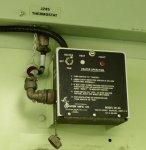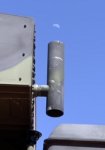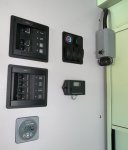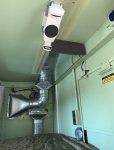XCRV
Member
- 64
- 41
- 18
- Location
- roaming the Southwest USA
Someone saw our ad on another forum and asked:
“Hi - what would you say the your truck's minimum temperature capability is for semi normal habitation? Not the truck chassis but the living quarters.”
My answer was:
“As long as you’ve got plenty of diesel, the 60,000 BTU military heater should handle just about anything. (No need to run truck’s engine but this heater is diesel powered with an electric fan.) We picked this truck up outside of a base in Fairbanks, Alaska. This LMTV had been special ordered for severe cold since it was presumably meant to be used in or near the Arctic Circle. Fresh water tanks, pump and filter are under the bottom bunk. Weak point would be the grey water system. Those tanks are outside, under the habitat and use a bilge pump. We’ve just run water through it periodically to prevent the pump from freezing. Another work around would be a simple drain hose to bucket. Hubby remembers camping with temps in the teens. I’ll ask around and see if I can get a number from veterans who have been stationed in cold places.”
Anyone have experience with the M1079 box and 60,000 BTU heater in really cold weather?

“Hi - what would you say the your truck's minimum temperature capability is for semi normal habitation? Not the truck chassis but the living quarters.”
My answer was:
“As long as you’ve got plenty of diesel, the 60,000 BTU military heater should handle just about anything. (No need to run truck’s engine but this heater is diesel powered with an electric fan.) We picked this truck up outside of a base in Fairbanks, Alaska. This LMTV had been special ordered for severe cold since it was presumably meant to be used in or near the Arctic Circle. Fresh water tanks, pump and filter are under the bottom bunk. Weak point would be the grey water system. Those tanks are outside, under the habitat and use a bilge pump. We’ve just run water through it periodically to prevent the pump from freezing. Another work around would be a simple drain hose to bucket. Hubby remembers camping with temps in the teens. I’ll ask around and see if I can get a number from veterans who have been stationed in cold places.”
Anyone have experience with the M1079 box and 60,000 BTU heater in really cold weather?








